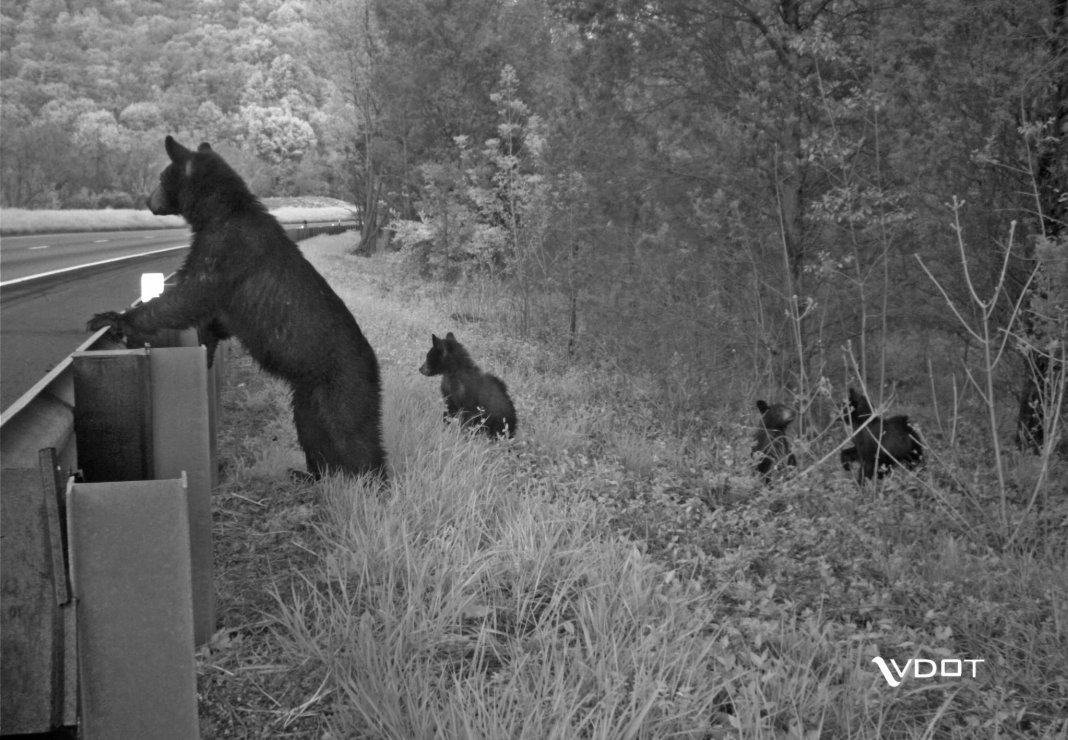VM – Wildlife sightings are commonplace for anyone who spends time on Virginia’s highways. But many drivers are also all too familiar with the danger that can arise quickly when animals venture into the human-made spaces crisscrossing their habitats.
Virginia drivers have a one in 74 chance of striking an animal, according to insurance statistics compiled by State Farm, a number that consistently puts Virginia among or near the top-10 most dangerous states for vehicle-animal collisions.
But state officials are hoping to change that by requiring a more thoughtful approach to how transportation infrastructure might affect wildlife.
This year, the General Assembly passed legislation to create a Wildlife Corridor Action Plan, an effort to identify hotspots and recommend crossing projects – such as overpasses or underpasses – that might make life easier for both animals and humans.
It’s also projected to save money spent to repair damaged cars. Currently, collisions with deer alone cost an average of around $533million per year, according to the state.
“This thing just wins on so many levels,” Sen. Dave Marsden, D-Fairfax, one of the bill’s patrons, said as he presented the proposal to the legislature in February.
The bill – supported by numerous environmental and conservation groups– requires the Virginia Department of Transportation, the Department of Conservation and Recreation and the Department of Game and Inland Fisheries to collaborate over the next two years and deliver the first plan by September 2022. After that, revised plans would be due every four years.
Before proceeding with any road project, VDOT would have to include consideration of terrestrial and aquatic wildlife corridors as part of its standard environmental impact reviews. The law specifies that VDOT “shall consider measures for the mitigation of harm caused by such road to terrestrial and aquatic wildlife.”
“It just changes the philosophy and the thinking,” said Misty Boos, the executive director of the Charlottesville-based nonprofit Wild Virginia, which supported the measure.
A recent wildlife safety project on Interstate 64 west of Charlottesville demonstrated the effectiveness of basic fences.
As part of a Virginia Transportation Research Council study, officials put up a mile of eight-foot-tall fencing to try to direct wildlife to two underpasses, one beneath a bridge and another through a tunnel-like box culvert. By putting the fencing up along the highway, the hope was that animals would learn to use the safe routes under the road.- Virginia Mercury
Long Description
Fencing put up along Interstate 64 near Charlottesville produced a dramatic decline in deer collisions. (Photo courtesy of VDOT) After two years of monitoring, the study found that deer-vehicle collisions in the area fell by an average of 92 percent. Deer crossings increased 410 percent at the culvert, and 71 percent beneath the bridge. There was no increase in deer-vehicle collisions at the ends of the fencing, an indication animals learned to go under, not around.
“They found it,” said Bridget M. Donaldson, a research scientist at the VTRC. “The numbers speak for themselves.”
The fencing for each site cost an average of $265,409. Estimating the value of a deer-vehicle collision at $8,936 (representing property damage and injuries), the researchers determined that the savings from the fences exceeded their costs in a little less than two years.
The wildlife corridor plan is expected to give officials a better sense of where similar projects would have the most effect.
In addition to deer, wildlife cameras set up at the sites captured bears with their cubs, coyotes and bobcats.
“They’re teaching their young to use those structures,” said Donaldson.
The vast majority of vehicle-animal collisions in Virginia involve deer, with an estimated 60,000 deer-related collisions each year.
Large-scale data collection has been an ongoing challenge for the state, which currently doesn’t systematically track where animal carcasses are found on roadsides. The state can collect limited data from police reports, insurance claims, and some driving apps that allow users to report roadkill.
VDOT has discussed implementing carcass reporting into its routine data collection procedures, allowing crews to report what they’ve found directly from the scene via a mobile device. But rolling out that system statewide is complicated.
“We have both contractors and VDOT staff that pick up the carcasses,” Donaldson said.
The wildlife corridor plan is also expected to help the state protect other species that are being hit by cars but may go unnoticed due to their size, such as salamanders.
“A lot of smaller animals can benefit too,” Boos said.
As animals migrate, Boos said, there’s a chance drivers could encounter creatures bigger than deer, including the elk that are being restored in Southwest Virginia .
The new law, Boos said, “opens the door for so much exciting work.”
“We need to go places,” she said. “Wildlife needs to go places.”



